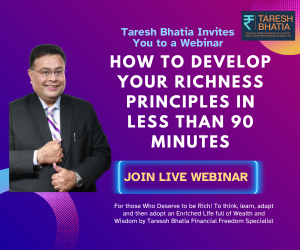1. Gather Necessary Documents for the relevant Financial year
Collect all required documents to provide to your Chartered Accountant (CA) for accurate tax filing. These include:
– PAN Card
– Aadhaar Card (Masked)
– Bank statements and passbooks
– Form 16 (provided by employer)
– Form 16A/16B/16C (for TDS on income other than salary)
– Investment proofs for claiming deductions under Sections 80C, 80D, etc.
– PPF, NSC, ELSS, life insurance premium receipts
– Tuition fee receipts for children
– Home loan interest certificate
– Rent receipts and lease agreement (for HRA claims)
– Medical bills and health insurance receipts (for deductions under Section 80D)
– Form 26AS (tax credit statement)
– Capital gains statement from mutual funds, shares, property, etc.
– Proof of any other income (e.g., interest income, rental income)
2. Plan for Tax Deductions and Exemptions

Identify all applicable deductions and exemptions to minimize tax liability:
– Section 80C (up to ₹1,50,000): PPF, NSC, ELSS, life insurance, etc.
– Section 80D: Health insurance premiums
– Section 24(b): Home loan interest
– Section 80E: Education loan interest
– Section 80G: Donations to specified funds
– HRA: House Rent Allowance exemption
3. Check Your Tax Credits and TDS
Visit the Income Tax Department’s e-filing website (https://www.incometaxindiaefiling.gov.in) to view and download Form 26AS, which shows tax credits and TDS. Verify that all tax deductions made by employers and other deductors are correctly reflected.
4. Calculate Your Total Income

Summarize your total income from all sources, including salary, house property, capital gains, business/profession, and other sources. Adjust for exemptions and deductions to determine taxable income.
5. Pay Advance Tax, if Applicable

If your total tax liability exceeds ₹10,000 in a financial year, ensure to pay advance tax in four installments by the due dates:
– 15% by June 15
– 45% by September 15
– 75% by December 15
– 100% by March 15
Non-payment of advance tax may result in interest penalties.
6. Submit Necessary Documents to Your CA
Provide all gathered documents to your CA for accurate preparation and filing of your income tax return. Ensure you discuss any specific income sources or deductions that may apply to you.
7. File Income Tax Return

Your CA will prepare your return based on the provided documents and information. Review the prepared return for accuracy before submission. Ensure the return is filed by the due date: July 31 (for individuals not requiring audit) or September 30 (for individuals requiring audit).
8. Verify Your Filed Return
After filing, verify your income tax return electronically using Aadhaar OTP, EVC (Electronic Verification Code), or by sending a signed ITR-V to CPC, Bangalore. Visit the Income Tax Department’s e-filing website to complete the verification process.
9. Obligations of an Income Tax Payer
Maintain accurate and complete financial records. File income tax returns on time. Pay any remaining tax dues before the due date. Respond promptly to any notices or queries from the Income Tax Department.
10. Cross-checking Information
Use the Income Tax Department’s e-filing portal to check the status of your return and tax credits. Ensure all tax deducted at source (TDS) matches your Form 26AS.
Also read: Capital Gains in India for FY 2023-24
11. Expectations After Filing

Refund Processing: If you have paid more tax than your actual liability, expect a refund which can be tracked online. Notice of Demand: If there is any discrepancy or additional tax payable, you may receive a notice of demand. Notice for Scrutiny: In some cases, the Income Tax Department may select your return for scrutiny to verify the details.
Websites for Cross-Checking
Income Tax Department’s e-filing portal: [incometaxindiaefiling.gov.in](https://www.incometaxindiaefiling.gov.in)
TRACES (for viewing Form 26AS): [tdscpc.gov.in](https://www.tdscpc.gov.in)
By following these steps and providing all necessary documents to your CA, you can ensure a smooth and accurate filing of your income tax return, while maximizing your deductions and minimizing your tax liability.
The author of this article, Taresh Bhatia, is a Certified Financial Planner® and advocate for female empowerment. For more information and personalized financial guidance, please contact taresh@tareshbhatia.com
He has authored an Amazon best seller-“The Richness Principles”. He is the Coach and founder of The Richness Academy, an online coaching courses forum. This article serves educational purposes only and does not constitute financial advice. Consultation with a qualified financial professional is recommended before making any investment decisions. An educational purpose article only and not any advice whatsoever.
©️2025: All Rights Reserved. Taresh Bhatia. Certified Financial Planner®
Subscribe Now for Upcoming Blogs!
[convertkit form=6555951]
📢 Join free live webinar —
Couple Finance Formula™ Register here




